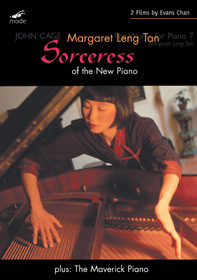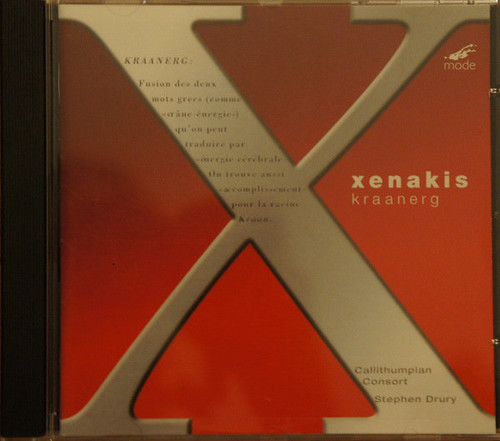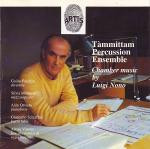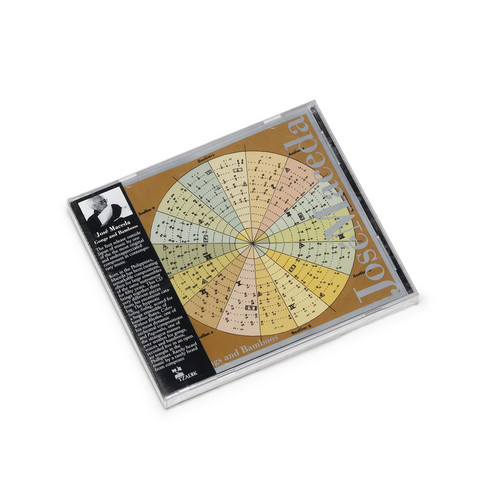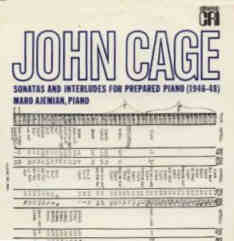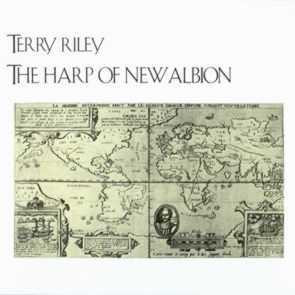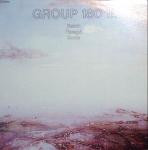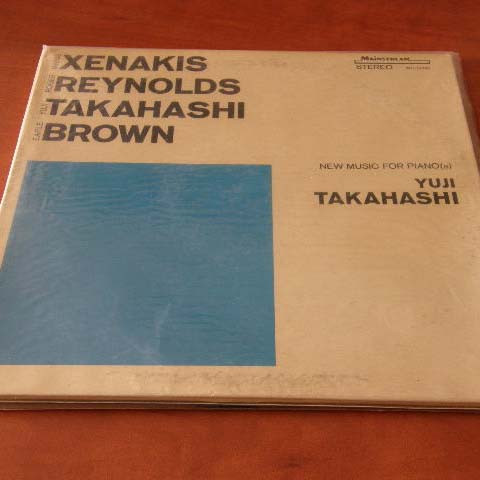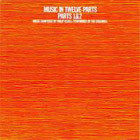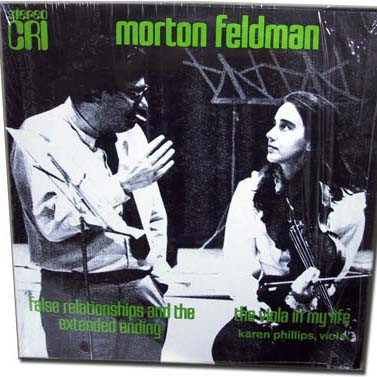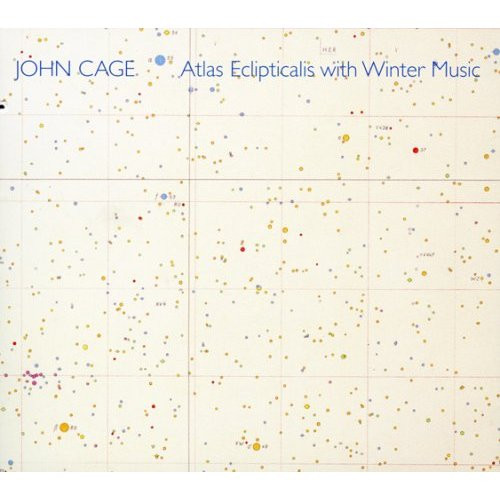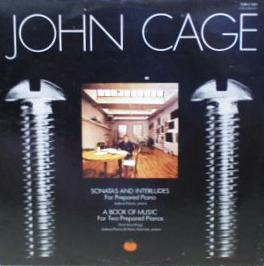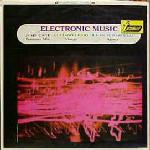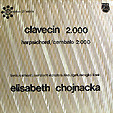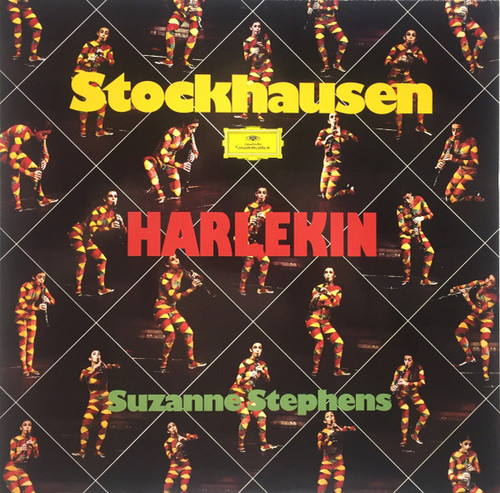The Artistry of Margaret Leng Tan
10 years in the making, 2 films by Evans Chan trace the artist's life, career and pianism. Strumming the strings of a grand piano like a harp and performing Beethoven on toy piano are among the surprising scenes in Evans Chan's documentary, Sorceress of the New Piano (2004), which celebrates the trans-cultural career of Singapore-born, New York-based pianist Margaret Leng Tan, hailed by The New Yorker as 'the diva of avant-garde pianism.' Featured performers and critics include Joan LaBarbara, E…
Kraanerg
Kraanerg (1968) for 23 instruments and 4-channel tape. Callithumpian Consort, Stephen Drury, conductor. First recording with restored analog tape. Kraanerg is one of Iannis Xenakis' most popular - and infamous - works. A visceral and highly charged score for woodwinds, brass, and strings along with quadrophonic tape. The title, Kraanerg, is a composite of two Greek words: "kraan", meaning to perfect, to accomplish; and "erg", signifying energy. Commissioned for the gala opening of the National A…
Silenced Voices
The Barton Workshop & others. Frank Denyer & James Fulkerson, music directors. 'Woman, Viola and Crow' (2004) with Elisabeth Smalt, muted viola, voice, percussion sounds. 'Two Beacons' (2005) with Harma Everts, voice; Boris Visser, muted violin; Rozemarie Heggen, muted double-bass; Neil Sorrell, sarangi; Tobias Liebezeit & Juan Martinez Cortès, percussion; Jos Zwaanenburg, Melkorta Olafsdottir, Ayano Akubo, flutes; Joeri de Vente, horn; Yula Andrews, Ella Dangerfield, Catherine Guy, Lucinda Guy,…
Chamber Music By Luigi Nono
Recorded at Sentemo Records, Cessalto (Italy) on 30 January and 1-2-20 February 1993, except track 5 recorded live 4 May 1991 at Teatro Comunale, Ferrara (Italy). "Polifonica-Monodia-Ritmica", for 6 instruments and percussion, composed in 1951. "La Fabbrica Illuminata", for voice and tape, composed in 1964. "...sofferte onde serene..." for piano and tape, composed in 1976-77. "Post-Prae-Ludium Per Donau" for tuba and live electronics, composed in 1987. "Con Luigi Dallapiccola" for 6 percussionis…
Lepton
Four absolute masterpieces by one of the greatest composers of the 20th Century. Spanning over three decades, LEPTON presents New York born Wuorinen at his radical best, pushing the limits of instrumental and electronic music. Expressly chosen for this exclusive Tzadik release by longtime Wuorinen fan John Zorn, the pieces here include the electronic composition Time's Encomium, (winner of the Pulitzer Prize in 1970); from the '80s: New York Notes, which brilliantly blends electronic tape with a…
Gongs and Bamboo
The first release outside Japan of music by one of the most original and underappreciated composers in contemporary music brings José Maceda's remarkable catalog to international attention. Born in 1900 in the Philippines, Maceda created extraordinary compositions, often for large ensembles of the same instrument, across five decades of creative output. This CD brings together three very different pieces from his enormous catalog, showcasing the breadth and originality of his compositional visio…
Sonatas And Interludes For Prepared Piano (1946-48)
another scarce early LP by John Cage, Sonatas and Interludes (1946-48) is considered Cage's first mature composition. The idea of a prepared piano filled with nuts, bolts, screws, rubber mutes and weather-stripping comes as much from Cowell's tinkering 15 years earlier (Aeolian Harp, for instance) as it does from Cage's engagement with percussion ensembles beginning in 1937. Indeed, it was the practical limitations of the stage at the Cornish School that forced Cage, an accomplished pianist, to …
The Harp Of New Albion
The Harp of New Albion is a transfixing solo piano recording, conceived and performed by world-renowned minimalist composer, the ever-innovative Terry Riley. His inspiration for this work came from a legendary harp, left behind in the New World in 1579, on the shores of Nova Albion, which is now called San Francisco Bay. A Native American medicine man is said to have found the harp and placed it on a cliff where the westerly winds played upon it and temperature and humidity changes created an ev…
II.
Group 180 II is from 1985 and exhibits the same good taste in modern compositional works. There are two pieces by Steven Reich, “Piano Phase” and “Octet”. Compositions by András Soós and Bela Farago make up the rest of the album. It should be note that, with the exception of Rzewski and Reich, the composers are all members of Group 180. It is again a well played set and one that fans of modern music will treasure. Only one copy available.
180-AS-CSOPORT
'Group 180' ('180-as Csoport' in Hungarian) was a Hungarian ensemble dedicated to the performance of new music, active from 1978 until 1990. The group achieved recognition for their performances and recordings of contemporary music in the minimal style. Group 180's membership included several young Hungarian composers (among them László Melis and Tibor Szemz?), whose works formed an important part of the ensemble's repertoire. This brought the group prominence as one of the preeminent European n…
New Music For Piano(s)
Compositions by Xenakis/Takahashi/Earle Brown performed by Yuji Takahashi, on Mainstream. Hérma for piano solo (1960-61) by Xenakis dedicated to Yuji Takahashi; Fantasy for Pianist (1963-64) by Reynolds; Metatheses (1968) by Yuji Takahashi dedicated to Gunther Schuller; Corroboree (for three pianos) (1963-64) by Earle Brown commissioned by and dedicated to Aloys, Alfons and Bernhardt Kontarsky Only one copy available.
Music in Twelve Parts
Ultra rare original UK first pressing on Caroline, cover design by Sol Lewitt - "All of my works which predate 1976 fall within the highly reductive style known as minimalism. I feel that minimalism can be traced to a fairly specific timeframe, from 1965 through 1975, and nearly all my compositions during this period may be placed in this general category. All such categories are arbitrary, however, and can be misleading. For example, although Music in 12 Parts would most likely be classified as…
Viola In My Life / False Relationships
False Relationships and the Extended Ending" alternates between exact proportions and "free time" in the vertical style (slowly changing chords, common-tone suspensions etc. in works such as "Atlantis" (1958) and "The Swallows of Salangan" ) which came after the counterpoint style of the early 50's graph pieces. "The Viola in My Life" (composed especially for Karen Phillips) was the next development adding melody-like gestures. Ethereal, heartfelt. Only one copy available.
Solo Music
Recordings of Contrary Motion and Two Pages by Philip Glass during February and March 1975 in New York City. Performed by Philip Glass (electric organ) and Michael Riesman (acoustic piano on Two Pages). Only one copy available.
Atlas Eclipticalis With Winter Music
Featured compositions: "Atlas Eclipticalis' (1961, for chamber ensemble); "Winter Music" (1957, for 3 pianos); "Atlas Eclipitcalis" (1961, for orchestra); "Winter Music" (1957, for 20 pianos). Cage's relationship with the Cornish Institute in Seattle dates back to the 1930s, when he taught there and performed as accompanist for many dance pieces. Cornish was also the scene of several of his musical discoveries and innovations. Cage's celebrated return to the Cornish Institute in 1983 led to thes…
Sonatas And Interludes / A Book Of Music
Sonatas And Interludes' for prepared piano (1946-48) performed by Joshua Pierce. 'A Book Of Music' for two prepared pianos (1944) performed by Joshua Pierce (left channel) and Maro Ajemian (right channel). Only one copy available.
Etudes Australes For Piano
Etudes Australes is a set of etudes for piano solo by John Cage, composed in 1974–5 for Grete Sultan. It comprises 32 aleatoric pieces written using star charts as source material. The etudes, conceived as duets for two independent hands, are extremely difficult to play. They were followed by two more collections of similarly difficult works: Freeman Etudes for violin (1977–90) and Etudes Boreales (1978) for cello and/or piano. Only one copy available.
Electronic Music
First in a series of albums from the mid-late 1960s consisting of contemporary classical composers in the experimental/electronic field. It contains Fontana Mix by John Cage, Visage by Luciano Berio and Agony by Ilhan Mimaroglu.
Clavecin 2.000 (Harpsichord / Cembalo 2.000)
Original first pressing (silver cover, green label) of this legendary LP with works by Berio, Ligeti, Constant, Clementi, Miroglio, Donatoni "The listener is expected to play this recording at full volume and in total darkness." is suggested on the estensive liner notes on back cover. Excellent copyTracklisting:A1 Continuum Composed By - György LigetiA2 Profil Sonore Composed By - Graciane FinziA3 Insertions Composed By - Francis MiroglioA4 Intavolatura Composed By - …
Harlekin
Karlheinz Stockhausen's 'Harlekin' ('Harlequin') for clarinet; and 'Der Kleine Harlekin' ('The Little Harlequin') for clarinet (performed here by Suzanne Stephens). Only one copy available.
